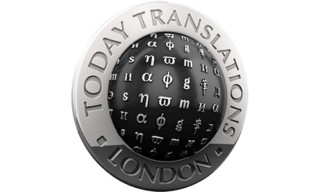Tom Chatfield’s book, Netymology: A Linguistic Celebration of the Digital World, delves into the origins of the vocabulary that has come to define the current era of the internet. We then decided to look into the most popular digital neologisms and their translation in other languages.
In an article for the Guardian, Chatfield looks at some of the most common neologisms that we encounter when surfing the web – words such as “avatar”, “LOL” and “trolling”.
The expansion of the English language, especially based on its digital vocabulary is a special case altogether and the the speed with which these neologisms infiltrate the daily vocabulary of both English and foreign languages is simply incredible.
The process in which a new word becomes part of the accepted vocabulary of a community is known as institutionalisation. The reason why internet neologisms have become embedded in every-day vocabulary so quickly is because they swiftly pass through all the stages of this process. First, they are used more and more frequently as they are spread via social media and various applications. Second, their meaning does not need a lot of definition since the pictures or applications are usually self-explanatory. Ultimately these words start appearing in various forms within common texts.
The culmination of neologisms being accepted into the official vocabulary is their inclusion in official dictionaries. Many internet-generated neologisms have been included this year into the Oxford Dictionaries Online – the online subsidiary of the Oxford English Dictionary. Some of them include “lol”, “tweet”, and even “muahahaha/bahahaha”. Seems like the OED is keeping up with the digital jargon!
An interesting issue is whether neologisms originating from the digital sphere travel through other foreign languages the same way that they become part of our normal vocabulary. Laughing is universal, but how do you LOL in Russian and Malaysian?
We have looked into the translations of some of the words mentioned in the Guardian article to see how they have been localised into different languages.
The words “avatar” and “trolling” – both spread via social media – have the same phonetic form in most languages, such as German, Spanish, Japanese, Russian ” with some etymological adaptations. On the other hand, more rarely used words such as “cupertinos” (auto-correct errors) or “Scunthorpe problems” (where automatic filters censor words with an unfortunate series of letters) do not have a one word equivalent in foreign languages.
The word “meme” seems to be a flexibly translated word, being called a “mem” in Spanish, “meemi” in Finnish, “mémobadg” in French, phonetically “M?ma” in Hindi and “M?mu” in Japanese. Although originated from Richard Dawkins’ book, they have the additional internet connotation.
The word “LOL”/”LOLs” has been adapted differently as well. Being an acronym for laugh-out-loud, it has stayed the same in various languages such as Russian, Romanian, Norwegian, Arabic. Although various jargons are used, according to the dictionary the French have adapted it to “mdr” (“mort de rir”/died of laughter), the Italians – “che ridere!” and the German “ll” (“lautes lachen”). Some languages prefer to stay with the traditional “hahaha”, such as Thai – “555” (5 is read as “ha”), Swedish – “asg” (abbreviation of “asgarv” meaning “laughter”), Malaysian – “ha3” (meaning “hahaha”).
American research institutions and companies dominate technology development, so English is the main language for the digital vocabulary. Usually other languages bring in the new words as they are, but this process has its linguistic and cultural barriers and the forms do not always stay the same. Therefore, a careful study must be made before stepping into the area of digital interpretation.
Unsurprisingly, professional translation companies are not often required to translate phrases that contain neologisms spawned by the internet. However, at Today Translations we pay attention to current trends in digital localisation and are happy to help with any entanglements you might find yourself in within the digital sphere. For more information, get in touch with us at [email protected] or call us at +44 (0) 207 397 2770

